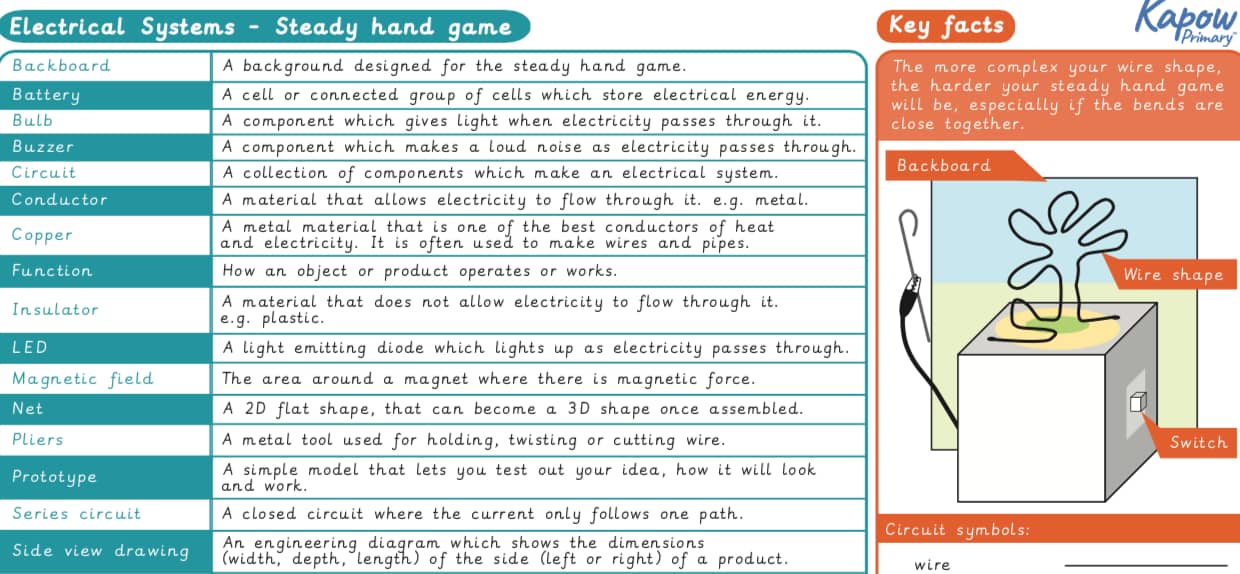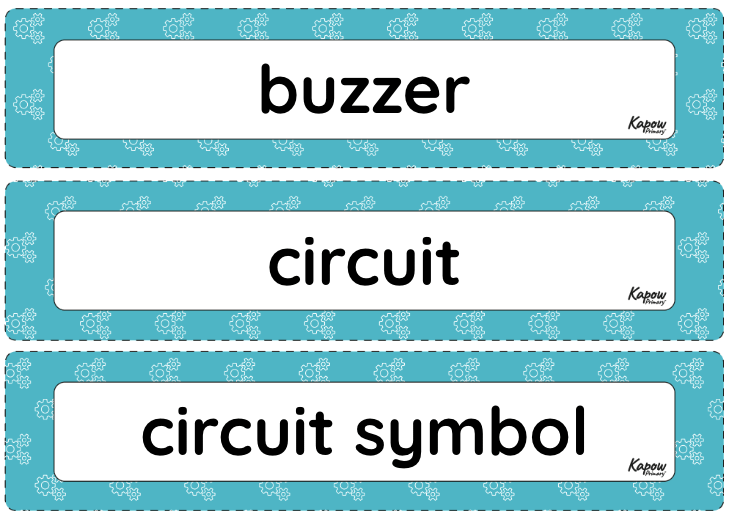Electrical systems: Steady hand game
This unit hub can be used to inform your medium term plan and to navigate to related resources.
- Subjects >
- Design and technology >
- Upper key stage 2 >
- Year 6 >
-
Electrical systems: Steady hand game
Unit outcomes
Pupils who are secure will be able to:
- Explain simply what is meant by ‘form’ (the shape of a product) and ‘function’ (how a product works).
- State what they like or dislike about an existing children’s toy and why.
- Learn about skills developed through play and apply this knowledge in a survey of one or more children’s toys.
- Identify the components of a steady hand game.
- Design a steady hand game of their own according to their design criteria, using four different perspective drawings.
- Create a secure base for their game, with neat edges, that relates to their design.
- Make and test a functioning circuit and assemble it within a case.
Suggested prior learning
Electrical systems: Doodlers
Get startedLesson plans
Lesson 1: Developing through play
- To research and analyse a range of children’s toys.
Lesson 2: Game plan
- To design a steady hand game.
Lesson 3: Base building
- To construct a stable base.
Lesson 4: Electronics and assembly
- To assemble electronics and complete their electronic game.
Key skills
Key knowledge
Related content
Unit resources

Knowledge organiser – DT Y6: Steady hand game
This Knowledge organiser condenses the key learning from the Year 6 Electrical systems: Steady hand game unit to support pupils'…

Vocabulary display – D&T Y6: Electrical systems: Steady hand game
A display version of the key vocabulary from the Electrical systems: Steady hand game unit.
Cross-curricular opportunities
Computing
‘Pupils should be taught to:
- use search technologies effectively, appreciate how results are selected and ranked, and be discerning in evaluating digital content’
See National curriculum - Computing key stages 1 to 2.
Science
‘Pupils should be taught to:
- compare and give reasons for variations in how components function, including the brightness of bulbs, the loudness of buzzers and the on/off position of switches
- use recognised symbols when representing a simple circuit in a diagram’
See National curriculum - Science key stages 1 to 2.
Mathematics
‘Pupils should be taught to:
- recognise, describe and build simple 3-D shapes, including making nets’
Build on the learning
*New* Mechanical systems: Automata toys
Pupils build on their understanding of form and function from evaluating their steady hand game to create a functional automata toy with moving parts.

